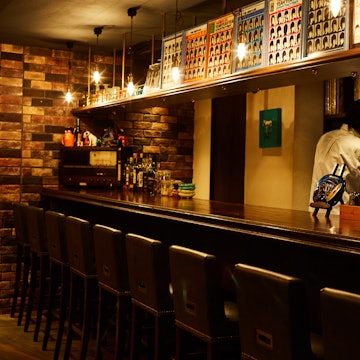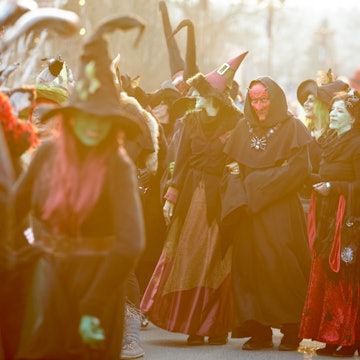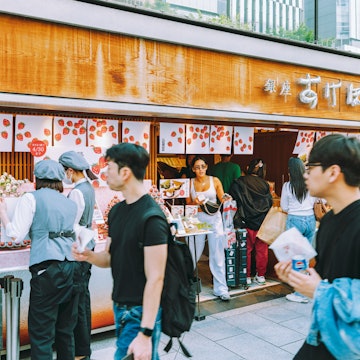

An installation at teamLab Planets. Matt Haide Photography/Shutterstock
Lines for art exhibitions in Japan's capital are as long as those for the latest pop idol's concerts. Across this city ravenous for cultural events, the dynamically changing shows at museums and art galleries in Tokyo ensure that even locals will never get bored.
Weekends and holidays are best avoided if you are seeking an uncrowded, serene experience, and unsurprising for a city of meticulous, perpetually full schedules, tickets should be bought in advance. Entrance is rarely free, save for Culture Day (November 3). Most art institutions close on Mondays; the rest of the week, public museums shut their doors as early as 5pm, while private ones stay open longer.
From ukiyo-e (woodblock prints) to NFT gifs blinking on LED screens, find inspiration of your own at these seven of the best museums in Tokyo.
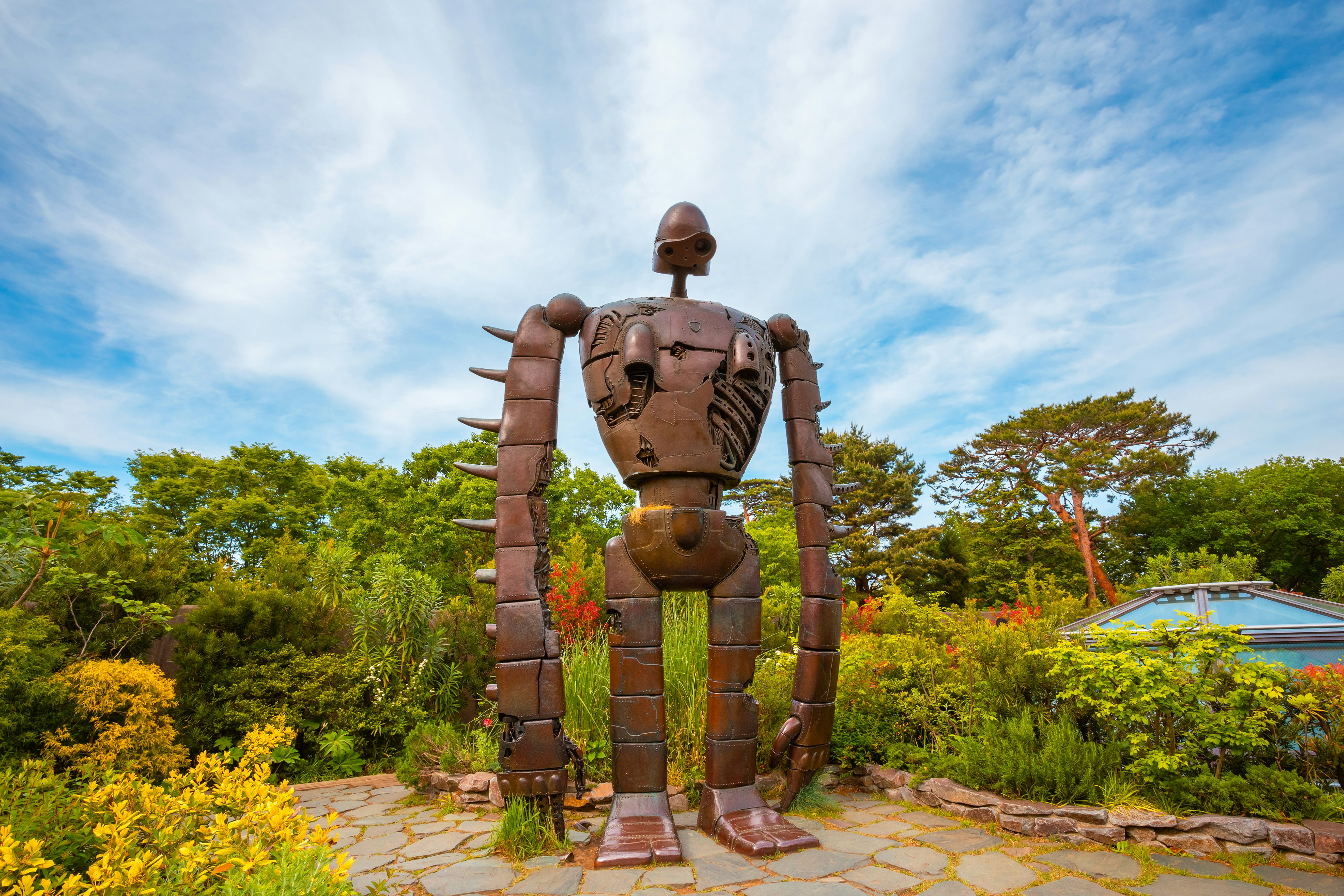
1. Ghibli Museum
Best for children (and children at heart)
The fantastical Ghibli Museum in Tokyo's Mitaka neighborhood looks like it belongs in one of the studio's movies itself. Ivy hugs the colorful walls, while a Totoro plushie grins from a fake entrance and one of Laputa's iron giants stands on the rooftop.
The doors of the family-friendly museum open to an even more magical space. Upon entering the Ghibli Museum, you are given a ticket made from pieces of the 35mm film actually used in theaters. You can hold it up to the light and see which scene you got.
Original Ghibli art displays peek into animation history, and there's even a replica of Hayao Miyazaki's desk. The museum screens short movies, some of which are exclusive to the museum and only available for a limited time. The cute cafe and shop are among the best places for Ghibli merchandise.
Make it happen: Ghibli Museum tickets – at just ¥1000 Japanese yen (US$7) for adults and up to ¥700 (US$5) for children, depending on age – are affordable but notoriously difficult to nab due to high demand. Reservations are necessary. Also, be prepared for the fact that no photos are allowed inside the museum.
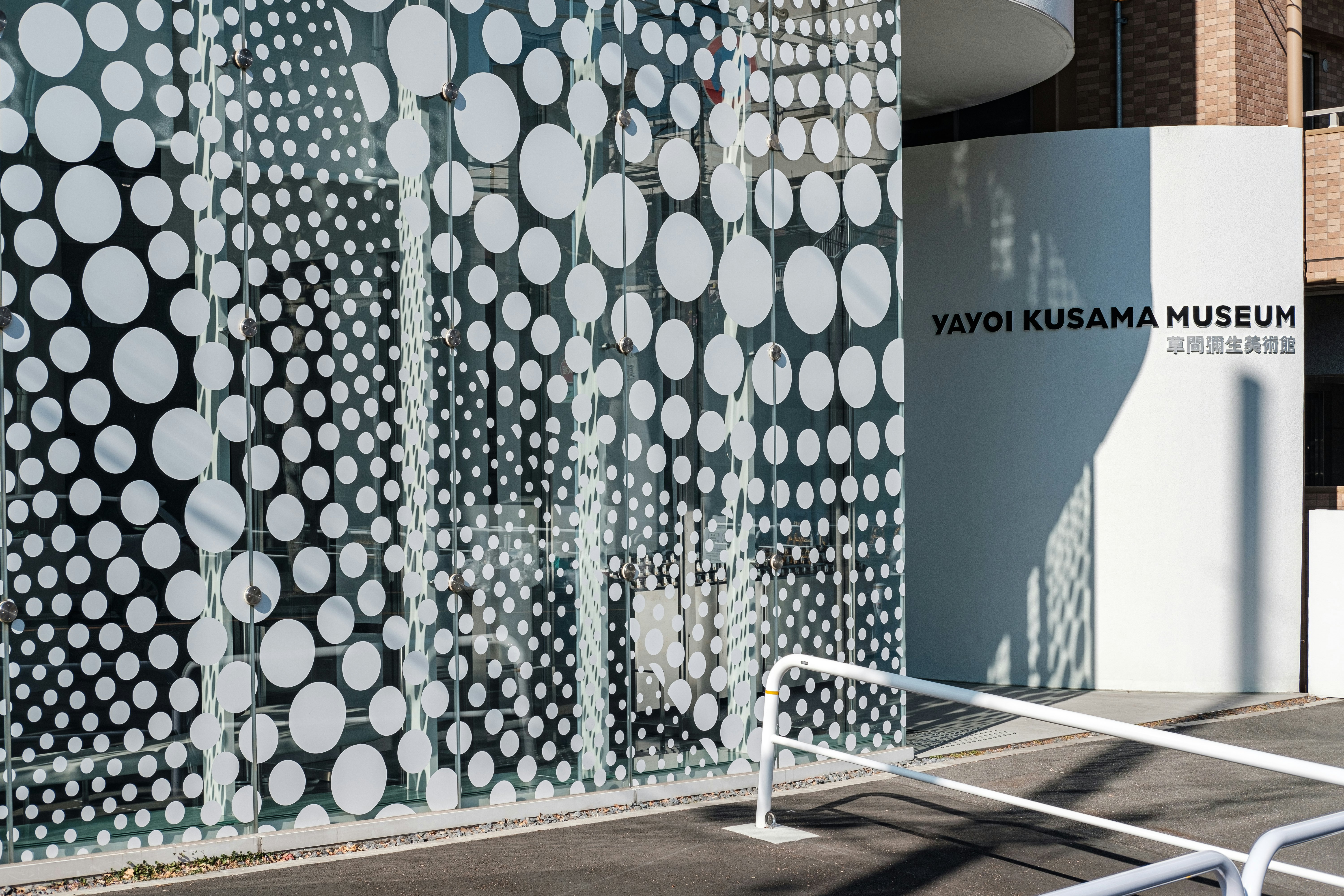
2. Yayoi Kusama Museum
Best dedicated to a single artist
The Yayoi Kusama Museum, run by the Yayoi Kusama Foundation, opened in 2017 to ensure that art by its prolific avant-garde namesake is always on display. Best known for her polka dot pumpkins and infinity mirror rooms, Kusama has kept creating into her 90s.
Exhibitions at many museums dedicated to a single artist remain pretty static, but the Yayoi Kusama Museum often changes what's on view, which makes the tickets highly coveted, since even Tokyoites are itching to visit at least twice a year. Also, the museum often exhibits works for the first time ever in Japan – or the world.
Make it happen: Special exhibitions at the museum may require purchasing timed tickets in advance.

3. teamLab Planets
Best for immersive installations
This international art collective – made up of various specialists, such as artists, programmers, engineers, animators, mathematicians and architects – has been unstoppable. At teamLab Planets, you can step on flowers of light, wade barefoot through silky warm water among digital fish and wander in a digital forest looking for extinct animals. In contrast to most museums, at this whimsical wonderland you should touch the art, snap photos and become fully immersed in the fun.
Planning tip: Prepare for your own debut show – in one room, you can do a drawing, then watch as it swims across the walls.

4. Mori Art Museum
Best view
On the 52nd and 53rd floors of the Roppongi Hills Mori Tower, the Mori Art Museum stands the tallest among the Tokyo art museums. Visit for the art but linger for the views.
Exhibitions at the private museum walk a tightrope between brave curation of cutting-edge art and pop culture. Shows can include everything from works by ukiyo-e artist Hokusai to Hello Kitty and Attack on Titan. The Mori Art Museum has even collaborated with Takashi Murakami and futurist designers and stars of Japanese architecture.
Planning tip: The Sky Deck is just ¥500 (US$3.50) for museumgoers. It's a rare open-air observation deck in Tokyo, and the 360-degree view includes the iconic Tokyo Tower and the Tokyo Skytree. Even Tokyo Bay is visible by day.

5. Tokyo Metropolitan Teien Art Museum
Best-kept secret
As much as public institutions can be secret, or as much as secrets can exist today, the Tokyo Metropolitan Teien Art Museum is something close to it – at least, it's relatively uncrowded.
Open since 1983, it's housed in the former residence of Prince Asaka Yasuhiko. The prince and princess lived in Paris during the golden age of art deco, so the whole building, which is designated as one of Japan's Important Cultural Properties, was constructed by the best artisans of that style at the time.
Planning tip: The Tokyo Metropolitan Teien Art Museum is set in a delightful manicured garden, which is particularly stunning in the autumn.

6. 21_21 Design Sight
Best for design fans
With starchitect Tadao Ando and fashion designer Issey Miyake involved, architecture, fashion and design otaku (geeks) are all sure to fall head over heels for 21_21 Design Sight.
Nine architects from Japan have been recipients of the Pritzker Architecture Prize, the most of any country worldwide, and Ando is one of them. The exhibitions often fulfill the tall order of showing you something you've never thought of before, but regardless of what's on view at 21_21 Design Sight, the building alone is a work of art, with its sloping roof and underground halls. It both blends into Midtown Garden greenery and stands out with its concrete geometry.

7. Tokyo National Museum
Best for first-time visitors to Japan
The Tokyo National Museum in Ueno Park is Japan's first, oldest and largest museum, displaying more than 100,000 pieces, hundreds of them national treasures, covering practically every category – paintings, sculptures, calligraphy, architectural models, metalware, swords, pottery and archeological objects.
With a wealth of traditional Japanese items, such as kimono, samurai armor, calligraphy scrolls and ukiyo-e (mainly in the Honkan building), it's among Tokyo's must-visit attractions, especially for first-time visitors to Japan.
Planning tip: Since most Tokyoites visit this landmark museum as schoolchildren, it's often uncrowded and relaxed, with spacious exhibition halls spread over six buildings. In the teahouses in the garden, you might even chance upon a haiku gathering.








